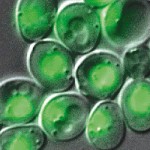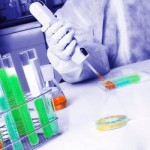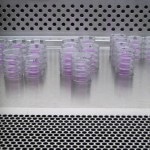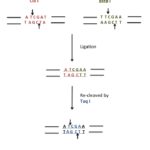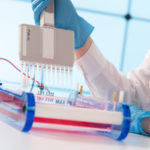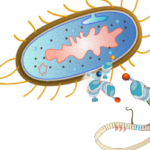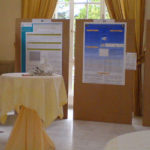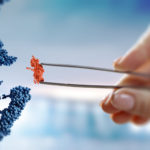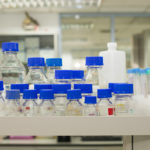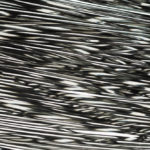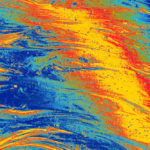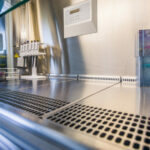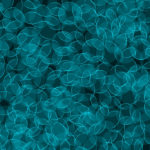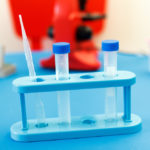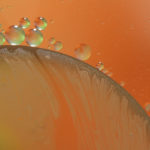Victoria Doronina
Vicki did her PhD in Molecular Biology at the University of Edinburgh. She had been working as a postdoc in several Russel group UK universities while honing her skills in scientific and creative writing. She is now a Technical Officer at the Manchester Metropolitan University, UK, and pen for hire. Check out my proudest achievement, which may be useful for you: The BiteSizeBio Guide for Protein expression
Articles by Victoria Doronina
Rust spots provide a good shelter for bugs, which will get there one day, and from the rust into your tissue culture. Here’s what you can do to deal with the problem as soon as you see it.
Microscopy is one of the fun parts of working with yeast. If you fix your cells, you can get a snapshot of the structures. Live cells microscopy using fluorescent proteins tagged proteins is even better, as you can see the dynamics and cell machinery working before your own eyes. Light Microscopy to Check for Contamination…
An ad about a Technical Officer position is usually nebulous. For example: “The post holder work as part of a technical team and provide both routine and specialist services in support of undergraduate, postgraduate, outreach and revenue-earning activities.” What Does a Technical Officer Do? In fact, a technical officer role can be summarized in two…
Recently we wrote an article about widespread cell culture contamination and how to detect it. This follow-up article will provide practical tips on avoiding cross-contamination in the first place. Be Cautious While Working The first way of cross-contaminating cultures is by accidentally mixing two cultures together, which may lead to an unintended co-culture or the displacement…
I remember the time when elves and wizards walked the Earth and DNA oligonucleotide synthesis was $5 a nucleotide. But the world has changed, nobody thinks twice about ordering an oligo. Whole gene synthesis, which is synthesis of long oligos and their assembly into a very, very long oligo. With prices of around 25–35 cents per…
While working in a UK university, I met a researcher who loved Italy much more than the UK. I asked her why she had left her favourite country. She told me that before coming to the UK, she had a 2-year fellowship in Italy where she was getting some promising results and had the chance…
One of the most annoying traits of “classical cloning” is an imperfect system of discriminating between the clones containing an empty vector and vector with insert after cloning. Even when your self-ligation control plate is empty, you can have a lot of colonies containing an empty vector on the “vector + insert” plate. Even the blue-white…
Consider a jigsaw puzzle. While most of the pieces have a different picture on their surface, all pieces fit together in an interlocking pattern. As unlikely as it may seem, restriction enzymes from different organisms can produce interlocking pieces of DNA – so called compatible cohesive ends (CCE). These are pieces of DNA, which fit…
Look Ma, No Kit! Unlike with kits, there are no propriety reagents in a DIY protocol. You know what exactly is in each reagent. The DIY approach is catching on!
If I piqued your interest in the first post about my new e-Book ‘The Bitesize Bio Guide to Protein Expression – a Bitesize Bio eBook’ check out this excerpt from the book explaining what an expression system is and how to choose the right one. What is an expression system anyway? There was a time…
A lot of scientists hate presenting posters. Because more often than not, you stand near your carefully designed, full of great results placard, all alone, while there is a crowd gathered two posters down. There are some conclusions you could come to: You might think that the popular poster author’s work is brilliant – unlike…
If you ever used a site-directed mutagenesis kit or ligation-independent cloning, then you also used restriction enzyme Dpn I. But what does it do and more interestingly, why? Restriction enzymes and methylases: the yin and yang of bacteria Usual restriction enzymes, the toolkit of genetic engineering, are one half of the “yin and yang” pair…
Scientific conferences are a peculiar throwback to XIX century, when bearded white men in wool suits were meeting in ale houses to discuss the latest experiment they did at home – once. In our time of instant communication and telepresence, conferences are obsolete and I’ll tell you why. 1. The main reason not to go…
Like most scientists, you rely on grant monies to fund your research. Sustaining it depends on your ability to devise promising new ideas, collect new data and show proof-of-concept before writing another proposal to keep the cycle going. Only the best-of-the-best pilot projects seem to make the cut for experimentation when scarce lab funds are…
As frustration goes, cloning is often up there with trying to thread a camel through the eye of a needle. You do everything carefully: prepare your vector and fragment DNA, cut them as the restriction enzyme manufacturer instructs (complete digest in five minutes!), ligate, transform and go home in anticipation of a good number of…
One of our readers posted the following question to us and we decided to pass it along to everybody’s favorite microbiology expert, Aunt Yersinia: For one year I am working in different research laboratories, after I got from school. I keep wondering why EVERYBODY is using pre-made Agar solutions for pouring plates, and EVERYBODY is…
Scientific creativity and repetitive tasks do not go well together. There is nothing worse than having to repeat the same task over and over again – I know somebody who quit science because of this and became a castle curator. So how do you minimise the amount of one of the most repetitive tasks –…
Isoelectric focusing electrophoresis (IEF) of proteins is nowhere near as popular as its cousin – sodium dodecyl sulphate-polyacrylamide gel electrophoresis aka SDS-PAGE. While in both methods the proteins are denatured, IEF is a gel-based electrophoretic separation of proteins using difference in their overall charges. The sodium dodecyl sulphate – SDS part of the usual gel…
Wouldn’t it be great to put your nucleotide sequence into a program and get back a 3D-structure of your protein and a full description of its functions? In theory, because the protein 3D-structure is determined by the aminoacid sequence, given the right algorithm and a powerful enough computer, this should be simple. In practice, because…
The conventional sequence for getting a new job in science (or anywhere else) goes like this: 1) Apply for job 2) Get an interview 3) Ace the interview 4) Pray that your references hold up. So if you had a bad relationship with your last boss, you’re in trouble. Because no matter how well you…
Recently BsB author Yevgeniy Grigoryev shared a total RNA isolation protocol. The one I use is even simpler—no expensive Trizol, which is a mix of phenol and some salts, all that is required is some Tris, SDS and phenol/chloroform mix. I have never used this protocol on non-yeast cells but I am almost sure that…
I met a final year PhD student once, who told me a sad story. His supervisor had a plausible idea that exercise reduces the chances of developing bowel cancer. To test the hypothesis, the student made a transgenic mouse with an increased incidence of bowel cancer and got the mice to run (or not run)…
I was shocked recently at a seminar called “Writing with style” by the Manchester University writer-in-residence, Chris Simms. He opened by saying that he has never done a presentation using Powerpoint in his life. What? Surely biologists and PowerPoint presentations (PPT) go together like biologists and white lab coats. They teach you to make PPTs…
Have you ever wondered how the media can write (often cringingly inaccurately) about a recently published scientific paper? Attending Standing up for Science media workshop organised by the Sense about Science charity shed a lot of light on this issue for me There are times when the media are hungry for any news, mostly during…
Every research lab is full of equipment specially designed for specific technical and experimental requirements, unfortunately this means said equipment is often expensive. Thankfully there are simple and cheap everyday items which can help you with your experiments and generally make life a lot easier. 1) Perforated metal ladle – to fish out samples from…
You can really tell when Honours Project students start working in the lab on their projects: the pH meter probe is suddenly floating in water and the weighing area is a mess, because nobody had time to explain “the weighing etiquette”. Fret no more! We will spell it out and you can print it out…
Despite obvious differences between the Korean professor-biotechnologist Hwang Woo-suk and German-born postdoc Jan Hendrik Schön, who used to work in the US on semiconductors, both of these scientists have something in common. Since Hwang Woo-suk’s and Schön’s groundbreaking articles were published in Nature and Science, nobody has been able to reproduce their results and the…
In her article How to Get Perfect Protein Transfer in Western Blotting, Emily Crow recommends Coomassie staining your gel after transfer to the membrane to check the quality of the transfer. A good transfer should not leave behind proteins and PVDF membrane, stained by 0.1% Ponceau S in 5% phosphoric acid and destained with water…
It is a truth universally acknowledged that free cheese exists only in a mousetrap, and even there it’s free only to the end user. So it’s no wonder that the traditional system of most scientific publications through publishing houses seems to be fair. A publishing house (PH) employs editors as well as technical personnel to…
Parents of small children attending nursery know that the period of time from September to June is a succession of colds and flues for the whole family – children with their underdeveloped immune system exchange viruses, creating new potent strains. Well, that’s probably how bacteria feel all the time in the natural environment teeming with…
The stability of an antibiotic depends on its chemical structure, method of isolation (from natural sources or chemical synthesis), and the mechanisms of inactivation. First generation antibiotics isolated from natural sources, such as penicillin, are the most unstable, followed by its semisynthetic derivatives (such as ampicillin and carboxycylin). Aminoglycosides (kanamicin, spectinomycin, etc.) are more stable.…
Tandem affinity purification (TAP) is a versatile technique allowing the isolation of proteins for various purposes including Western blot and mass-spectrometry. The target protein is fused with protein A from streptococcus and the calmodulin binding domain, which together comprise the TAP-tag (for an introduction to TAP-tagging, see this article). To purify a TAP-tagged protein from…
If you have ever worked with RNA, you know about DEPC (diethylpyrocarbonate). You add it to water at a concentration of 0.1%, shake or stir, incubate at 37°C for two hours or at room temperature overnight and, as if targeted by a magic bullet, the RNAses that may have been in the water are gone.…
During my postgraduate studies, I did literally one PCR reaction with a pre-optimised protocol on a not especially difficult template. So my karma came back with vengeance, when as a part of my first postdoc I had to amplify a template containing a 35 bp-long GC-rich stem-loop, which proved to be extremely difficult. This was…
Arguably, molecular biology is impossible without microbiology – even if you work exclusively with transgenic mice, you may one day need to amplify a vector in E. coli. And microbiology is definitely impossible without good aseptic technique. The main principle of good microbiological practice is a zero tolerance approach: it’s good to be a little…
Here, we share a protocol for a midiprep, which, if not faster, gives a larger plasmid DNA yield than any commercial midiprep kit.
Summertime… The birds are singing, the trees are growing. Your tissue culture has sprouted yeast contamination, your yeast culture is happily growing bacteria. Your bacterial culture was growing calmly and predictably, dividing every twenty minutes, but suddenly its optical density has dropped, and it’s full of some sort of filaments and clumps. Or you did…
There are several yeast transformation protocols around, and most of them require a lot of steps: overnight starter culture, dilution and growth to logarithmic phase, several washes, and so on… These protocols work very well since they have been optimised for maximum transformation efficiency, which is needed for applications like library construction. But they are…




